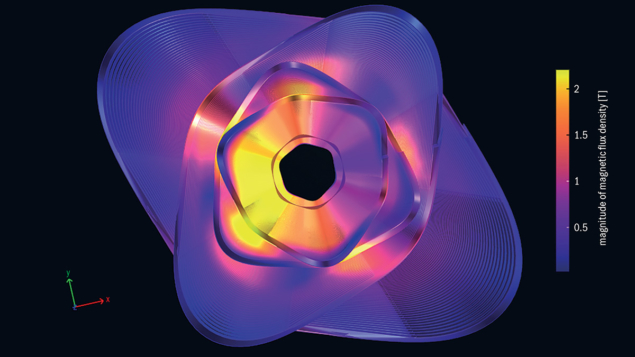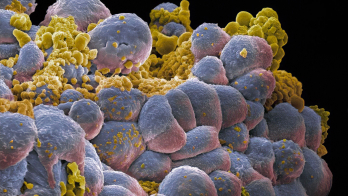
The proposed electron–positron Higgs and electroweak factory FCC-ee, a major pillar of the Future Circular Collider (FCC) study, is a leading contender for a flagship project at CERN to follow the LHC. Envisaged to be housed in a 91 km-long tunnel in the Geneva region, and to be followed by a high-energy hadron collider utilising the same infrastructure, it is currently the subject of a technical and financial feasibility study, as recommended by the 2020 update of the European strategy for particle physics.
Maximising energy efficiency is a major factor in the FCC design. Two new projects backed by the Swiss Accelerator Research and Technology collaboration (CHART) seek to reduce the environmental impact of FCC-ee by exploring the use of high-temperature superconductors in core accelerator technologies.
Much like its predecessor, LEP, and indeed every lepton collider to date, the main magnet systems in the FCC-ee design are based on normal-conducting technology. While perfectly adequate from a magnetic-field point of view, normal-conducting magnets consume electricity through Ohmic heating. The FCC-ee focusing and defocusing elements, comprising about 3000 quadrupole magnets and 6000 sextupole magnets, are estimated to consume in excess of 50 MW when operating at the highest energies. This can be reduced if the magnetic systems are made superconducting, and if high-temperature superconductors (HTS) were to be used. Whereas conventional superconductors such as the niobium-titanium used in the LHC must be cooled to extremely low temperatures (1.9–4.5 K), state-of-the-art HTS materials can operate up to 90 K, significantly reducing the cryogenic power needed to keep them superconducting. The question remains if high-performing HTS accelerator magnets, with all their advantages on paper, can be built in practice.
Turning FCC-ee superconducting not only helps with operational costs and environmental credentials, but the new HTS technology has potential applications in everyday life
In April 2022, the CHART executive board gave the green light to two projects investigating the feasibility of superconducting technology for the main magnet systems of FCC-ee. CHART was founded in 2016 as an umbrella collaboration for R&D activities in Switzerland, with CERN, PSI, EPFL, ETH-Zurich and the University of Geneva as present partners. The larger HTS4 project, involving CERN and PSI, will focus on superconducting magnets, while CPES (Cryogenic Power Electronic Supply) will focus on cryogenic power supplies, with partners ETHZ and PSI.
The use of HTS-based magnets could dramatically reduce the power drawn by the main quadrupole and sextupole systems for FCC-ee when operating at the highest centre-of-mass energies, explains HTS4 principal investigator Michael Koratzinos of PSI. Furthermore, he says, since HTS magnets do not need iron to shape the magnetic field, they can be made much lighter and can be nested inside one another to increase performance and flexibility in the optics design. “Turning FCC-ee superconducting not only helps with the reduction in operational costs and the environmental credentials of the accelerator, but it also helps society develop this new and exciting HTS technology with potential applications in everyday life.”
High demand
HTS conductors are currently in high demand, mainly from a multitude of privately-funded fusion projects, such as the SPARC project at MIT. Their main disadvantage is their high cost, but this is expected to come down as demand picks up. SPARC needs about 10,000 km of HTS conductor during the next few years, compared to an estimated 20,000 km for FCC-ee, although on a later time scale.
The ultimate aim of HTS4 is the production of a full-size prototype of one of the FCC-ee short-straight sections based on HTS technology. Four work packages will address: integration with the rest of the FCC-ee accelerator systems; enabling technologies on peripheral issues such as impregnation; the conceptual and technical design of a short demonstrator and a prototype; and the design, construction and testing of the full prototype module.
“Any future project at CERN and elsewhere relies on innovative R&D to minimise its electricity consumption,” says project leader of the FCC study Michael Benedikt of CERN. “We are doing our utmost at FCC to increase our energy efficiency.”







